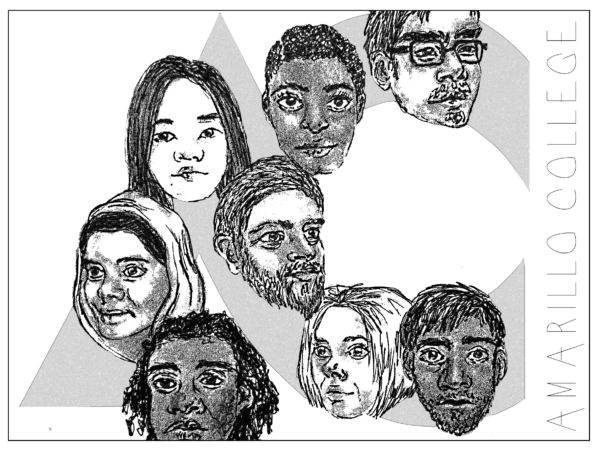
February is Black History Month — a time set aside to celebrate diversity. We should take this time to reflect on issues pertaining to social justice, multiculturalism and equality. We should take this time to recognize the important contributions of the African-American culture. We should take this time to embrace the ideals of cultural awareness and inclusion as we look back at where we have been and forward to where progress still is needed.
AC has a longstanding commitment to diversity on campus. On Oct. 1, 1951, the Amarillo College board of regents voted to admit black students, according to historian Joe Taylor in his book, The AC Story: Journal of a College. The first four black students admitted were Celia Ann Bennett, Freddie Imogene Jackson, Willetta F. Jackson and Dorothy Reese.
That landmark move made AC “the first, or at least among the first, of three public institutions of higher education” in Texas to admit black students, according to the book. At the time there still was a Texas law providing for segregated schools, and AC’s new policy was considered somewhat risky and progressive. Taylor writes that the community response was generally positive. In 1953, Celia Ann Bennett became the first black student to graduate from AC.
Diversity is — and always has been — an important principle at Amarillo College. Faculty address openness to other cultures and viewpoints, students represent a wide variety of races, ages and backgrounds, and the college continually strives to expose students to diverse experiences and ideas. The AC Presidential Scholars’ recent trip to Lithuania and Poland is an example of the college’s commitment to diversity. Through the trip, the Scholars were exposed to a variety of ethnicities, religions and economic backgrounds. Also, the upcoming spring break trip to London and Paris will provide students with a chance to go overseas and meet people from different cultures. The opportunity undoubtedly is life-changing, and travel is one of the best ways to be exposed to a variety of cultures. The Creative Mind Lecture Series is another example of diversity. This is the 33nd year of the series, which brings scholars to campus to address a variety of topics related to the humanities and culture. This year’s lectures will focus on Spain. The free presentations will take place at 12:30 p.m. and 7:30 p.m. Feb.18 and Feb. 25 and March 3. During the presentations, students will explore Spanish culture and take on a visual journey through Spain.
Another place AC addresses diversity is in the classroom. Courses in world religion, non-western literature and world culture — even history and government classes — address diversity. The courses open students’ eyes to the endless cultural differences, traditions and practices worldwide. AC’s commitment to diversity is admirable, but each of us must make an effort as well. Ironically, cultural awareness should not take effort. It should be innate. When children make friends at a young age, they don’t hesitate or consider their peers’ backgrounds; they say hello, and instantly they’re friends. Somehow as we grow up, we learn to avoid people who are different. We have to regain our childlike acceptance and follow the college’s lead. Diversity is openness to all people no matter where they come from. We all are people with detailed pasts and special qualities. The key is to band together as one group and form a culture of humanity. No matter your race, no matter your background, no matter your religion, we all matter. So take a stance and go out and meet people. You never know how they’ll influence your life for the better unless you try.

Leave a Reply